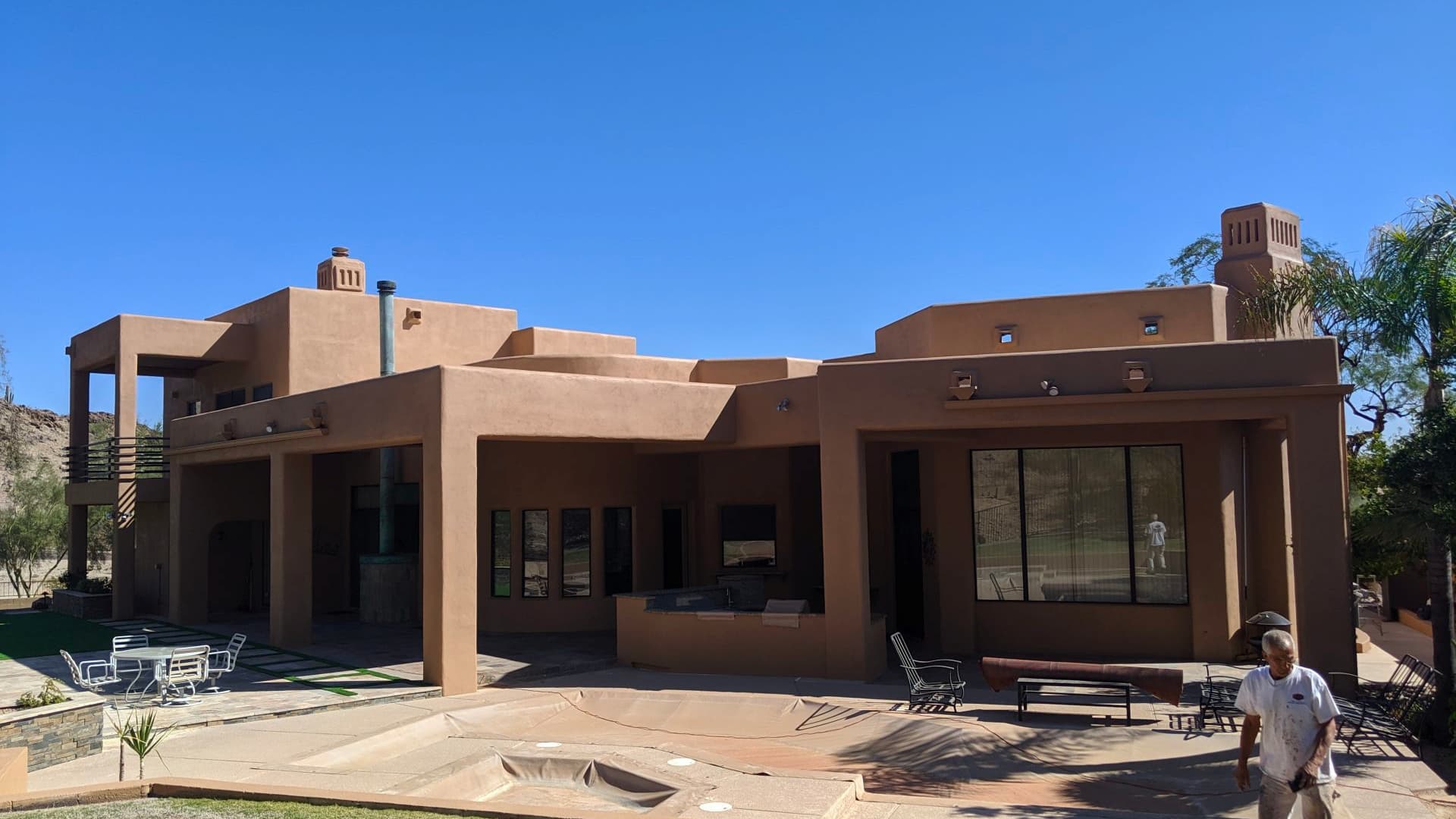During any painting project, regardless of how large or small, it is important to keep yourself protected from injury. You should use safety equipment at all times and observe rules to keep yourself and others safe.
At the Arizona Painting Company, we recommend that you always use safety equipment when painting. No project is worth endangering your sight, mobility or life, so make sure you have the following items and follow these rules every time that you paint.
Protecting Your Eyes
While most of the chemicals found in paints are not likely to cause permanent blindness, it is important to avoid getting paint in your eyes in the first place. Your eyes are extremely vulnerable during any painting project due to the nature of how paint is applied. Using eye goggles, glasses or a facemask will prevent paint, thinner, or debris from getting into your eyes and potentially blinding you.
If you do get paint, chemicals, or debris in your eye, it is important to flush the eye thoroughly right away. Avoid rubbing the affected eye as this can cause further damage. If you are unsure about the chemical content in paint or debris damaging the surface of the eye, seek medical attention to have your eye checked.
Protecting Your Skin
You can use different types of gloves depending on the type of work you are carrying out. Ordinary material gloves are sufficient when sanding surfaces. It is advisable to use non-porous gloves when working with water-based paint. Solvent-based products will have a higher chemical content, so special chemically-resistant gloves are recommended.
Some chemicals contained in paint and related products may cause adverse reactions when they come in contact with the skin. If you have sensitive skin or just want to err on the side of caution, wearing clothing that protects your skin, along with a face mask, when painting is also a good idea.
Breathe Easy
There are so many ways that you can damage your lungs during a typical painting project. While preparing surfaces or painting, you should always protect your lungs from pollutants in the air. Prevent dust and debris from entering your lungs with an anti-dust mask. However, when dealing with solvents, you will need a solvent-respirator for an extra layer of protection.
Keep windows and doors open when painting inside to ensure adequate ventilation. Remember, you and your family will normally need to remain in the home while the paint dries. Many solvent-based paints produce fumes that can lead to asphyxiation due to a lack of oxygen in an enclosed space. If a paint or related product carries a flammability warning, make sure there are no sources of ignition present until you are certain that fumes have fully dissipated.
Handling and Storage
Handling and storing painting products correctly is just as important as protecting yourself when using them. Reading labels thoroughly is the best practice when it comes to proper handling and storage. As already discussed, solvent-based painting products and heat do not mix. Never store solvents anywhere near extreme heat or open flames.
Keep children and pets safe by keeping containers sealed and well out of reach. Any materials that you use during your project should be properly disposed of to avoid the potential for accidental fires occurring.
Using Ladders
Always check ladders to ensure they are stable and that there is no structural damage. A damaged ladder can quickly buckle under the weight of a child, let alone a fully-grown adult. Make sure that both the ladder and the intended areas of placement are clean and free of slipping hazards. Never place a ladder in front of a door unless it is locked, has a visible safety notice on the other side, or you have someone standing watch.
Before climbing a ladder, test it to make sure that it is on an even surface and supported on all four points. Ensuring that the rungs of the ladder are dry won’t do a thing if your shoes are wet or have unsuitable soles. Shoes with adequate grips are recommended – going barefoot or wearing loose shoes is incredibly dangerous.
When climbing a ladder, you should take care to ensure that you are stable at all times. If you have to overstretch, you are putting yourself in extreme jeopardy. Always keep contact with three points when climbing a ladder, and never ascend past the last three rungs of the ladder. Do not use a ladder that is too short for the job and never leave children unsupervised around ladders.
The best way to avoid injury during a painting project is by hiring professionals to take on the risky jobs. The Arizona Painting Company can complete all your painting projects while you remain safe and comfortable on the ground. Give us a call today.

